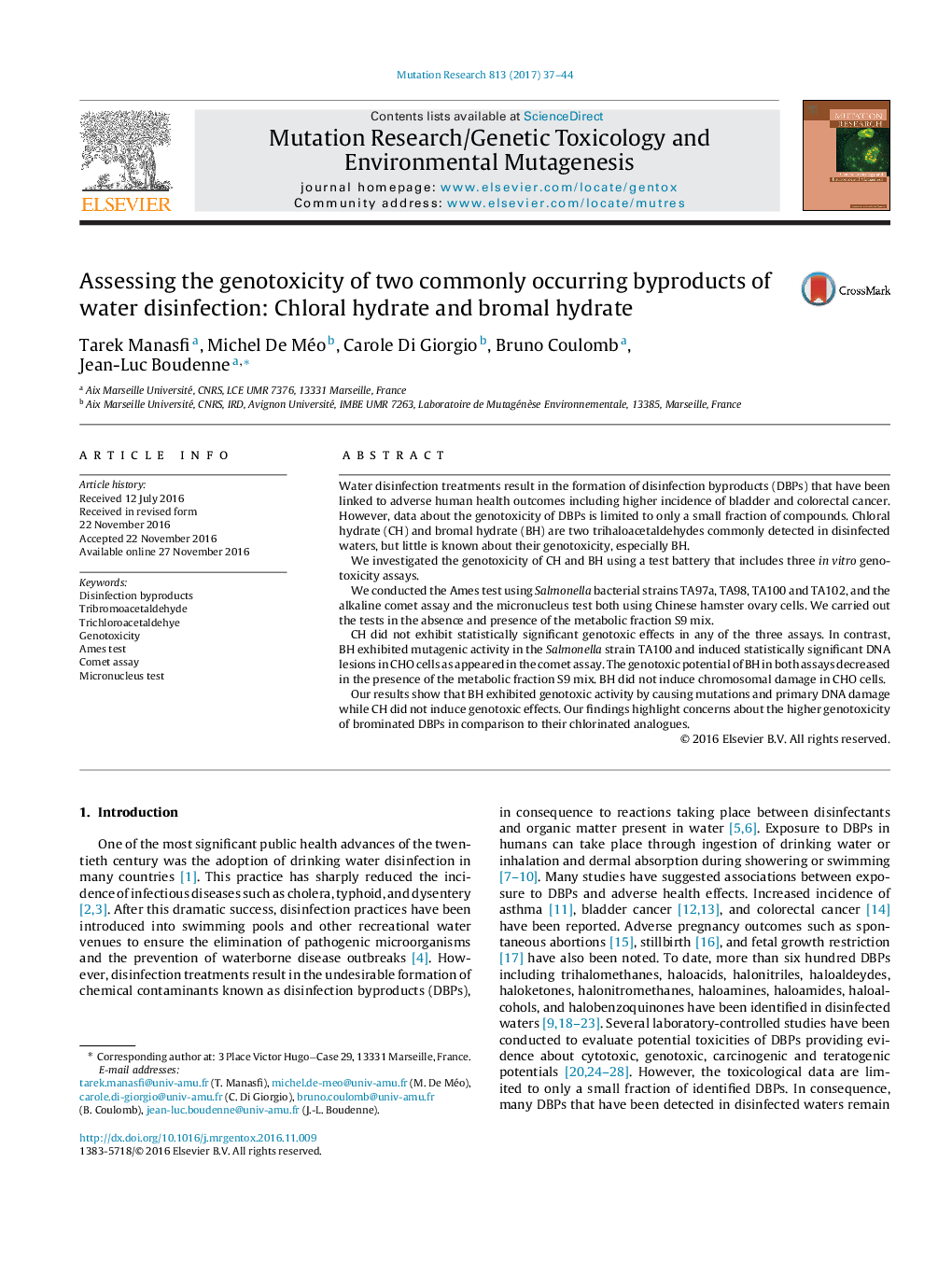| Article ID | Journal | Published Year | Pages | File Type |
|---|---|---|---|---|
| 5528834 | Mutation Research/Genetic Toxicology and Environmental Mutagenesis | 2017 | 8 Pages |
â¢Genotoxicity of chloral hydrate and bromal hydrate investigated via 3 in vitro assays.â¢Chloral hydrate not statistically exhibiting significant genotoxic effects.â¢Mutagenic activity of bromal hydrate in the Salmonella strain TA100.â¢Significant DNA lesions in CHO cells induced by bromal hydrate.â¢Higher genotoxicities of brominated DBPs in comparison to chlorinated species.
Water disinfection treatments result in the formation of disinfection byproducts (DBPs) that have been linked to adverse human health outcomes including higher incidence of bladder and colorectal cancer. However, data about the genotoxicity of DBPs is limited to only a small fraction of compounds. Chloral hydrate (CH) and bromal hydrate (BH) are two trihaloacetaldehydes commonly detected in disinfected waters, but little is known about their genotoxicity, especially BH.We investigated the genotoxicity of CH and BH using a test battery that includes three in vitro genotoxicity assays.We conducted the Ames test using Salmonella bacterial strains TA97a, TA98, TA100 and TA102, and the alkaline comet assay and the micronucleus test both using Chinese hamster ovary cells. We carried out the tests in the absence and presence of the metabolic fraction S9 mix.CH did not exhibit statistically significant genotoxic effects in any of the three assays. In contrast, BH exhibited mutagenic activity in the Salmonella strain TA100 and induced statistically significant DNA lesions in CHO cells as appeared in the comet assay. The genotoxic potential of BH in both assays decreased in the presence of the metabolic fraction S9 mix. BH did not induce chromosomal damage in CHO cells.Our results show that BH exhibited genotoxic activity by causing mutations and primary DNA damage while CH did not induce genotoxic effects. Our findings highlight concerns about the higher genotoxicity of brominated DBPs in comparison to their chlorinated analogues.
